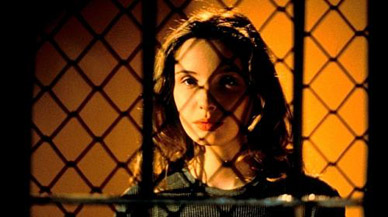|
|
Chapter Two - Three Colors: WhiteBy Brett BeachNovember 24, 2009
White is not only the funniest of the three but the most deadpan and the most acutely ironic. Karol finds the means to remake himself in the post-Communist Europe of the 1990s. He aligns himself with the "wrong crowd", proves himself to be a quick study and makes a name and some cash for himself. He finally has a way to achieve "equality" with Dominique but what he really wants is leverage and revenge and in the final minutes sets about the means of exacting this revenge. In the closing shot, he has gotten everything he wants and the answer he wants at precisely the moment he realizes he has taken it all away through a plot of his own making. The tears he cries are certainly tears of sorrow but might they not also be mixed with incredulous laughter? It also occurred to me just now that he might be considering himself as the butt of an off-color joke: "Hey didja hear the one about the man of Polish origin who . . ." But Kieslowski the humanist isn't passing any easy judgments or making cheap condescensions, just observing and recording I noted at the beginning that what Kieslowski achieves with White, or with any of his films built around ideas such as commandments or national mottos, is doubly accomplished. This is because he never sacrifices the plot and narrative to the larger themes he wishes to explore, but finds a way to let them emerge of their own accord through the world he has created and the collaborators he has surrounded himself with. The stories in the Three Colors films (all conceived with co-scenarist Krzysztof Piesiewicz) overflow with twists and unexpected corrections. If it were as simple as noting the ways in which White explores the notion of equality, well that might be fun for film majors to dissect, but it would suggest a terribly earnest, frankly boring, film. Thankfully, that is not what Kieslowski set out to achieve. White, and the others, feel as vibrant, alive, and moving, a decade and a half later, as they did in the 1990s.
|

|
|
|

|
Friday, November 1, 2024
© 2024 Box Office Prophets, a division of One Of Us, Inc.


